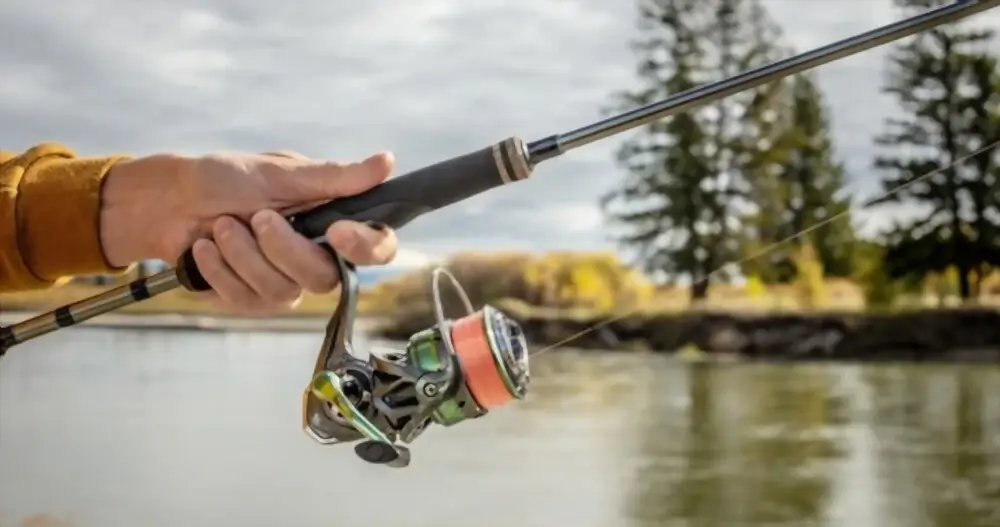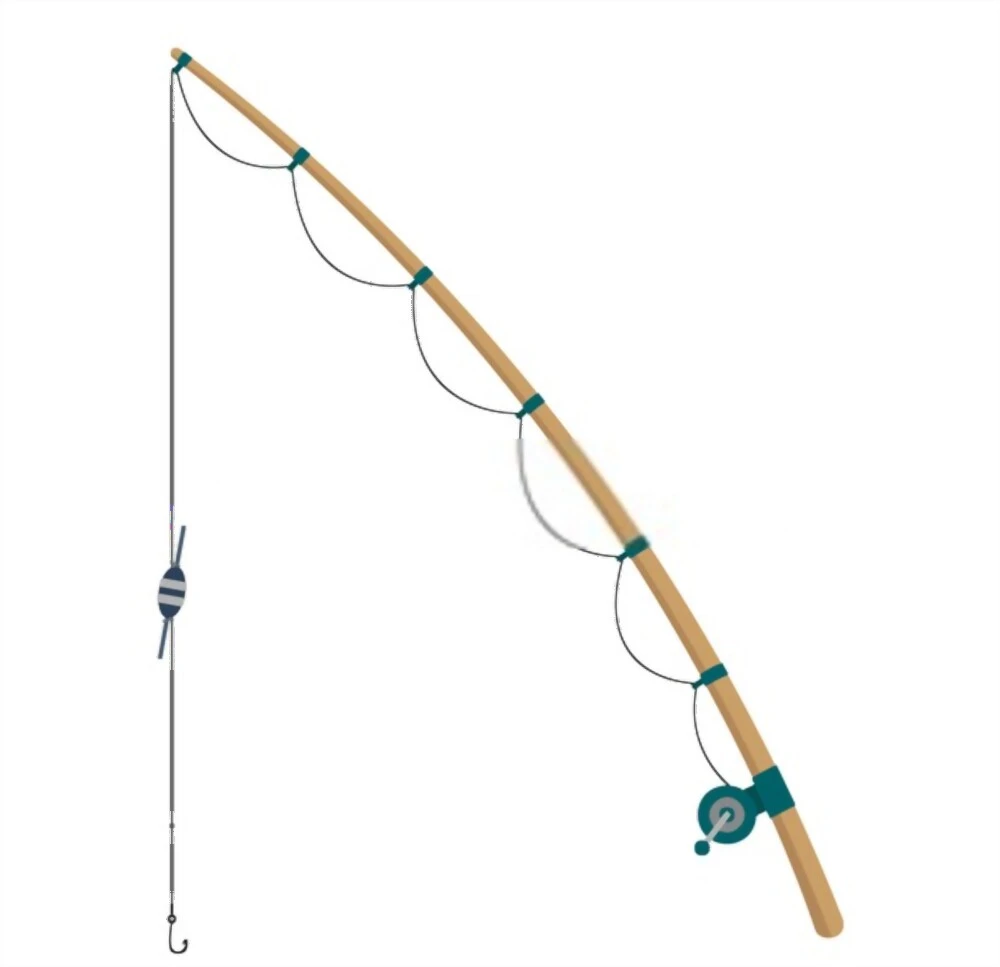If you think about the secret to fishing success, the ideal bait or lure could be your first thought.
Even when done as a hobby, angling is a challenging sport that requires patience, accuracy, tactful opportunism, and skilled baiting, as any fisherman will tell you.
It makes sense when you’re attempting to catch a fish, an elusive and bashful species that hides behind the cover of the seas, rivers, dams, or lakes. They never stay in one location for long and are always on the move.
Migrating away from any danger and disruption they meet, as is the nature of such species.
However, don’t underestimate the value of a decent fishing rod. Choosing the right rod for the job may be the difference between success and failure on any fishing trip.
If you use the proper one, your castings will go precisely where you want them to go.
So, in this article, I will discuss what is a spinning rod in detail and the significant benefits and drawbacks of spinning rods. So, let’s get started.

Table of Contents
What is a Spinning Fishing Rod Used For?
Spinning rods are available in single and multi-piece forms and are often composed of graphite or fiberglass. A spinning rod is a fishing pole built particularly for use with a spinning reel.
The rod handle has a reel seat that points downwards. Because, roll handle is positioned at the bar’s bottom, the line guides are situated on the bottom of the roll, on the same side as the reel.
A spinning rod’s backbone (or spine) lies on the top of the pole in opposition to its line guides.
The section of a fishing rod’s spine is more robust and better prepared to handle the strain when a large fish bends the pole. It’s always on the blank’s side that faces away from the fish.
The Spinning Reels
Spinning reels, often constructed of aluminum, stainless steel, or composite materials, are meant to be placed at the bottom of a rod. It exists in varied sizes to meet and maintain different lines of fishing demands.
Spinning reels also have other components, including anti-reverse levers, ball rollers, line drag knobs, spools, and bail mechanisms of different sorts and qualities. They also have different features.
Spinning reels are usually recognized for their capacity to cast lightweight lures and rigs in both left and right-hand variants for various fishers.
Advantage of Spinning Reels
- It’s highly adaptable and may be used for nearly any type of fishing.
- For lightweight applications, this is a better choice
- For beginner anglers, it’s easier to cast
- Cast light lures over a long distance
- With little backswing, able to produce a good cast
Disadvantage of Spinning Reels
- Over time, they are less sturdy.
- Not well adapted to catching giant, powerful fish
- When tossing a lure, the accuracy isn’t as good.
- They do not necessitate expert handling; experienced fishers are hesitant to use them.
What to Consider When Buying a Spinning Rod?

To avoid a tragedy on a fishing trip and to stretch your hard-earned cash, don’t merely twist a spinning rod to see whether it’s appropriate for you.
Inexpensive, high-quality spinning rods (like ours) resemble those you should avoid.
To choose the greatest spinning rod for you and your budget, take a moment to evaluate these five crucial aspects of every spinning rod.
Action
Measures the bending of the rod. Fast action curves at the tip, moderate curves at the reel. Fast action rods are more sensitive, while medium and slower action rods are more cast farther.
Composition
Spinning rods come with composite and fiberglass materials and graphite. Fiberglass cannot be destroyed; however, it is not sensitive.
Graphite is extraordinarily luminous and sensitive. Composite rods have varied fiberglass and graphite characteristics.
Power
Consider the term “backbone.” A heavy power rod is possible for large fish, high pound-test line, larger lure weights, and dragging fish in from deep cover. Throwing big lures on weak power rods is never a good idea.
Construction
Search for a strengthened reel lock and guides of the SIC rod. Confirm that the handle is the correct length and fishing style for your application.
Length
Casting distance is increased with longer spinning rods. Shorter rods are more precise.
FAQs About Spinning Rod
Spinning rods are known for their versatility since they can target a variety of fish species of various sizes and can handle a variety of lures and bait rigs. Anglers use spinning rods to catch anything from panfish and trout to bass, walleye, northern pike, and catfish.
Yes, both are better. The choice between spinning and casting might be based on a personal preference and fishing technique. If you are buying on the market, you should understand more and select the appropriate rod for you.
YES, you may use a spinning reel with your casting rod. However, I do not suggest it since it will have varying effects, which will be negative.
Using spinning reels on eating rods will not only get you a lot of strange looks, but it will also damage the performance of your rod and reel, adversely reducing your fishing results.
A fishing rod’s length typically ranges from 6 to 12 feet, so consider the sort of fishing you want to perform, the species you want to catch, and your fishing area before deciding on a length. Beginner fishers should aim for a length of approximately 7 feet.
Conclusion
Hopefully, you’ve read our article and now have a better grasp of what a spinning rod is and what to look for when you buy one.
People, particularly anglers who know what a spinning rod and reel is, will have an easier time choosing the right fishing rod for their needs.
They’re more likely to keep the reels and rods from getting mixed up. The spinning rods are suitable for those qualified to use fishing rods since the latter require an excellent anchoring technique and when the first rod throws a bait into the water.



